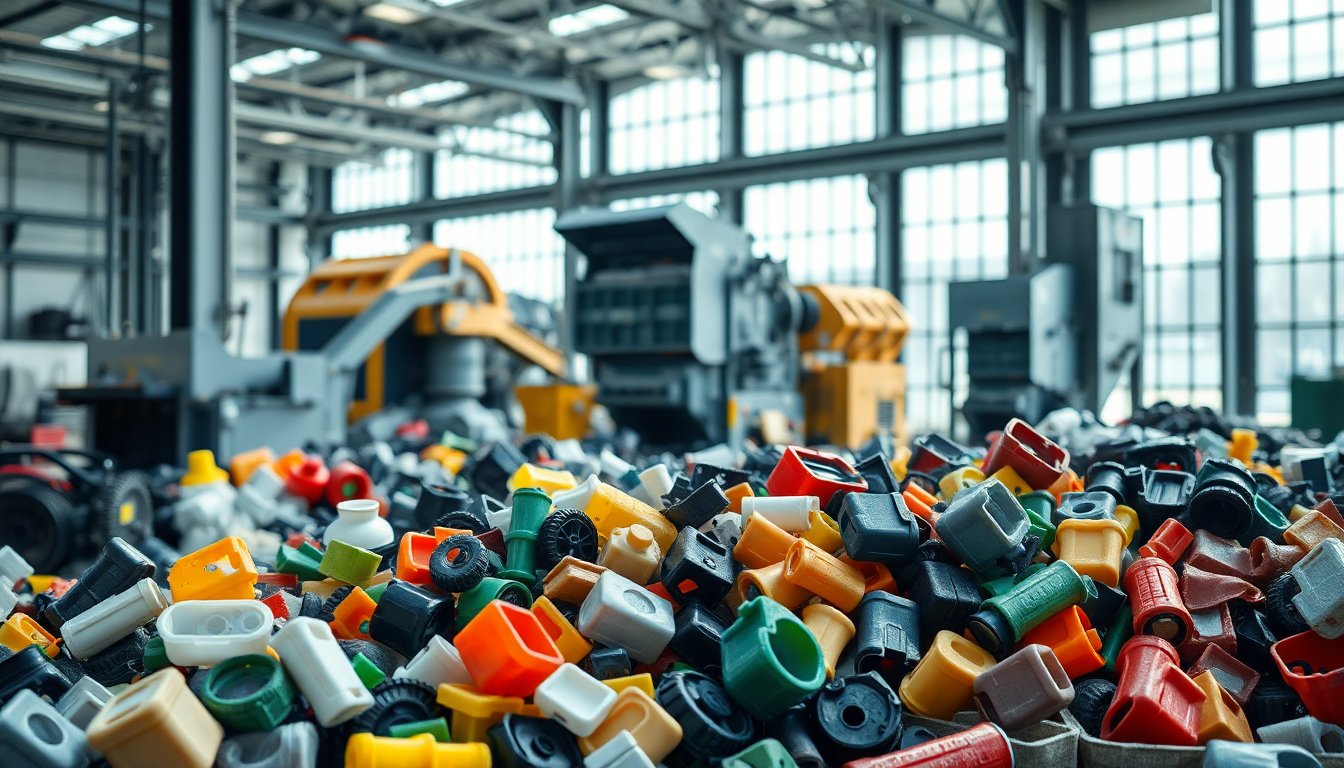Table of Contents
Europe’s pivotal negotiations on end-of-life vehicles regulation
Europe is currently engaged in crucial trilogue negotiations regarding the End-of-Life Vehicles Regulation (ELVR). The outcome of these discussions carries significant implications. This regulation addresses not only the targets for recycled plastics in vehicles but also marks a critical moment for sustainable mobility and the health of the continent’s industrial landscape.
The debate over the appropriate percentage of recycled plastic content—set at 15, 20, or 25 percent—is vital. This choice will greatly impact investments in the circular economy within the plastics and automotive sectors, shaping the future for years to come. The ELVR is more than an environmental directive; it is a test of Europe’s commitment to harmonizing its goals of circularity with industrial competitiveness.
The importance of circularity and competitiveness
Europe’s plastics industry is facing a critical situation. Rising energy and feedstock prices, alongside strict regulations and shifting investment trends, are significantly reducing manufacturing capacity across the continent. As industrial facilities close or move operations abroad, it is crucial for policymakers to recognize the strategic importance of maintaining domestic plastics manufacturing.
Plastics play a vital role in several key sectors in Europe, including automotive, construction, healthcare, and renewable energy. A weakened domestic industry not only threatens these sectors but also undermines Europe’s broader objectives, including the goal of achieving net-zero emissions. Without prompt action, there is a risk of further diminishing industrial resilience and autonomy, leading to increased dependence on imports.
Leveraging circular technologies for industrial growth
The automotive industry is increasingly recognizing that its efforts towards decarbonization depend significantly on access to innovative, circular materials produced within Europe. The European Commission’s initial proposal aims to mandate a 25 percent recycled plastic content in new vehicles within six years, with a quarter sourced from end-of-life vehicles. Although this goal may seem ambitious, it is achievable with the right technologies and incentives.
The role of chemical recycling
To effectively reach these targets, it is crucial for Europe to acknowledge the importance of chemical recycling. Relying solely on mechanical recycling is insufficient to meet the quality and performance standards required for automotive applications. Without adopting chemical recycling, the EU risks setting targets that, while attractive, may not be realistically attainable.
To promote the growth of chemical recycling, significant investments are essential, along with the incorporation of circular feedstocks into existing value chains. This initiative necessitates legal clarity and recognition that chemical recycling, in conjunction with mechanical and bio-based methods, represents a valid approach to meeting recycled content requirements. These foundational changes are critical; they will ultimately determine whether Europe can develop a strong and competitive circular plastics industry or become overly dependent on external sources.
Establishing a comprehensive framework for competitiveness
A well-crafted Extended Life Value Report (ELVR) is essential, but it cannot function effectively in isolation. Europe needs a comprehensive industrial policy framework that not only boosts the competitiveness of the plastics value chain but also creates an environment that encourages investments in circular technologies and the necessary recycling infrastructure.
It is vital to tackle high energy and feedstock costs to restore competitiveness. The European Union should consider adding polymers to the compensation list of the EU Emissions Trading System (ETS) and reinvesting the generated revenues into circular infrastructure. This would aim to reduce energy consumption and improve recycling capabilities.
Creating a level playing field
European recyclers and manufacturers face competition challenges
European recyclers and manufacturers encounter significant competition from materials produced under less stringent environmental and social standards in other countries. To combat this issue, the implementation of harmonized customs controls and mandatory third-party certifications for imports is essential. Such measures aim to prevent carbon leakage and ensure fair competition, which is vital for maintaining a level playing field between domestic and imported materials.
Furthermore, to stimulate circular plastics production, Europe must create a genuine single market for circular materials. This initiative involves removing internal market barriers, expediting approvals for emerging technologies such as chemical recycling, and providing predictable incentives to encourage investments in recycled and circular feedstocks.
The fragmented national regulations result in unnecessary costs and delays, especially impacting small and medium-sized enterprises that play a crucial role in Europe’s recycling ecosystem. Addressing these challenges is essential for fostering innovation and improving the overall efficiency of the recycling network.
The establishment of a Chemicals and Plastics Trade Observatory to monitor trade flows in real-time will be crucial. This initiative will enable the EU industry and officials to respond promptly with trade defense measures as needed, thereby maintaining a competitive edge.
A pivotal moment for Europe’s industrial future
The harmony of circularity and competitiveness in European plastics manufacturing
The relationship between circularity and competitiveness is not mutually exclusive; rather, these elements can coexist to enhance plastics manufacturing in Europe. This synergy is crucial for protecting jobs, promoting innovation, and reinforcing the materials necessary for the EU’s transition to climate neutrality.
The European Plastics Regulation (ELVR) signifies more than a mere regulatory framework; it embodies Europe’s potential to achieve its green goals through industrial progress. As trilogue negotiators advance in their discussions, they face a pivotal choice: should they develop regulations that simply manage waste, or should they create a framework that drives Europe toward a revitalization of its industrial sector?
The decisions made during this process will shape Europe’s position in the global economy. Furthermore, they may establish a precedent for merging climate objectives with industrial competitiveness, influencing sectors that extend beyond automotive manufacturing.


